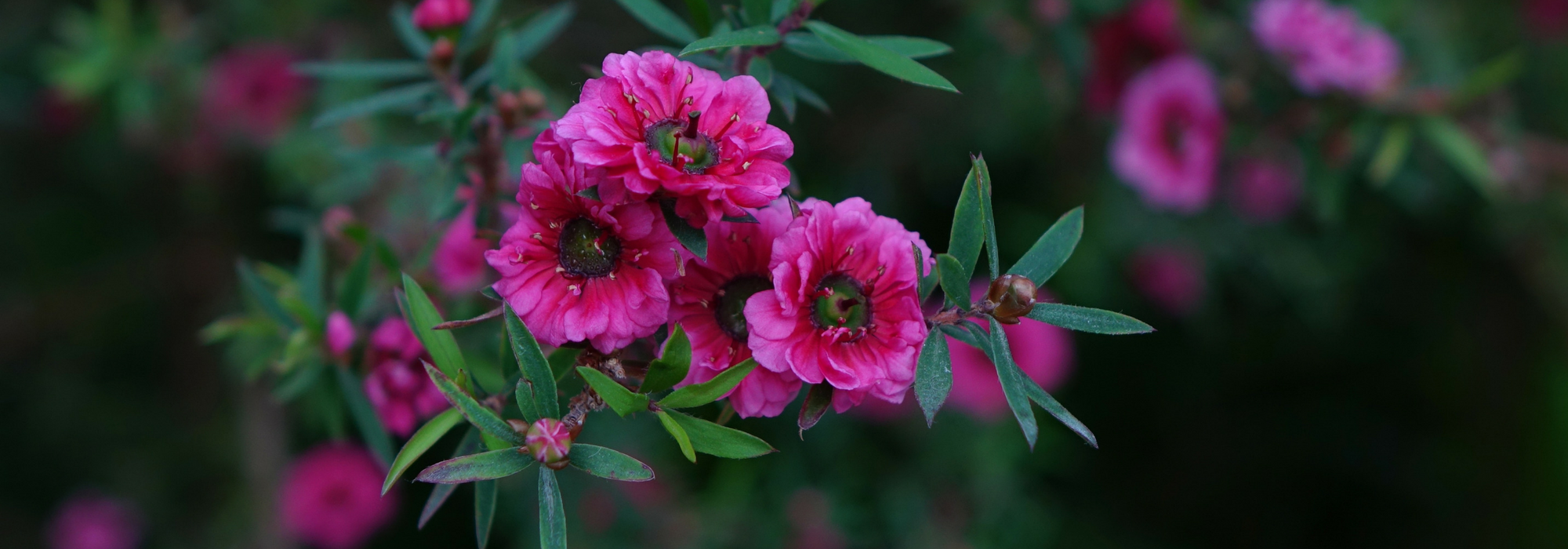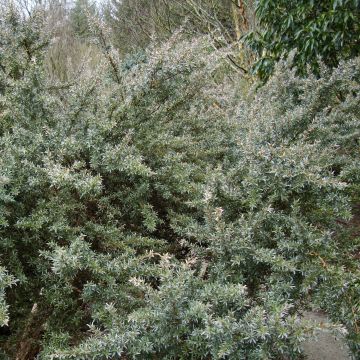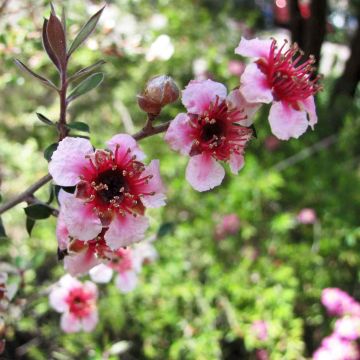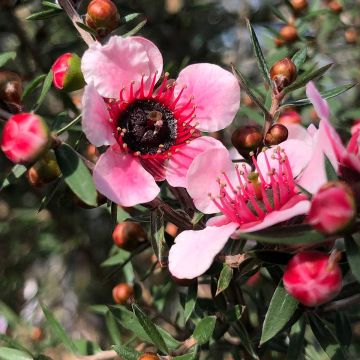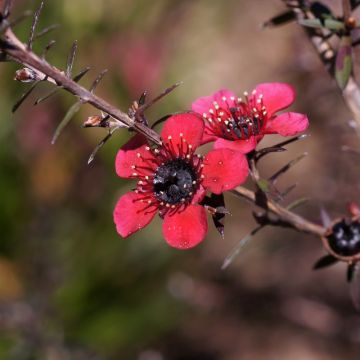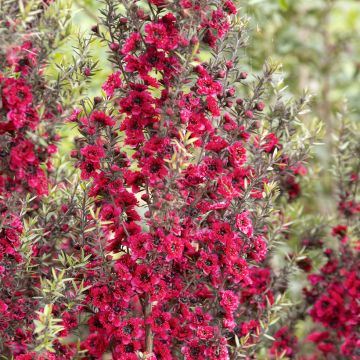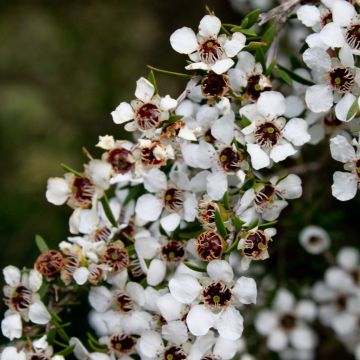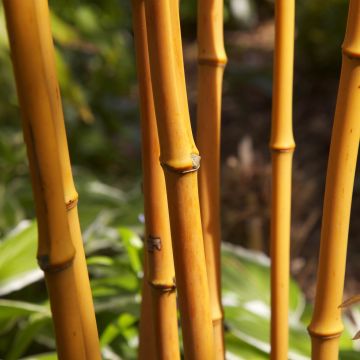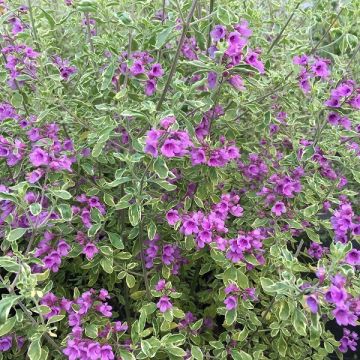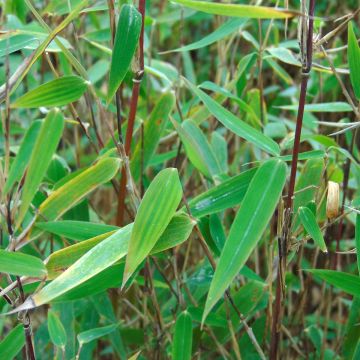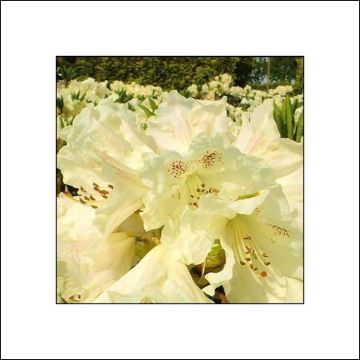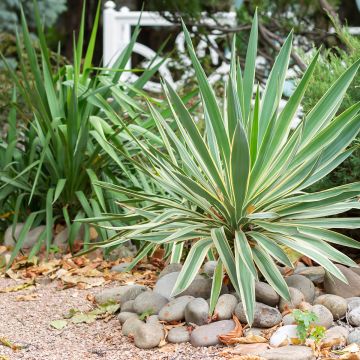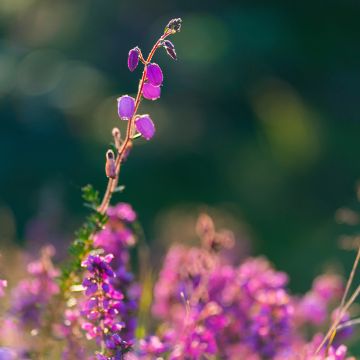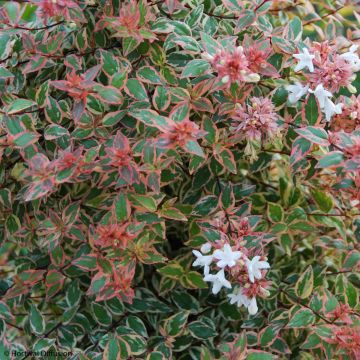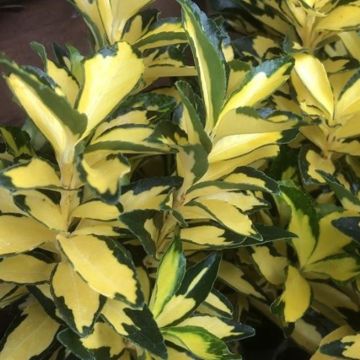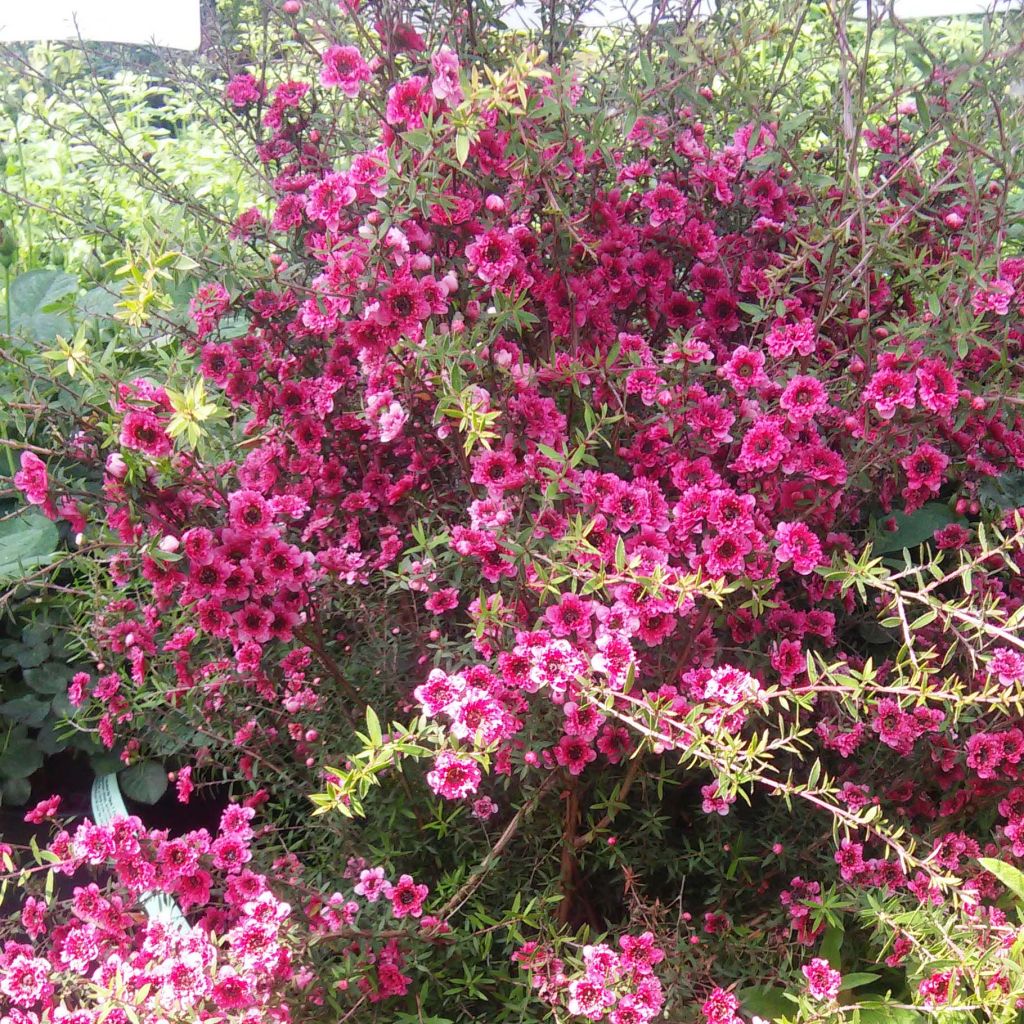

Leptospermum scoparium Wiri Kerry - Tea-tree
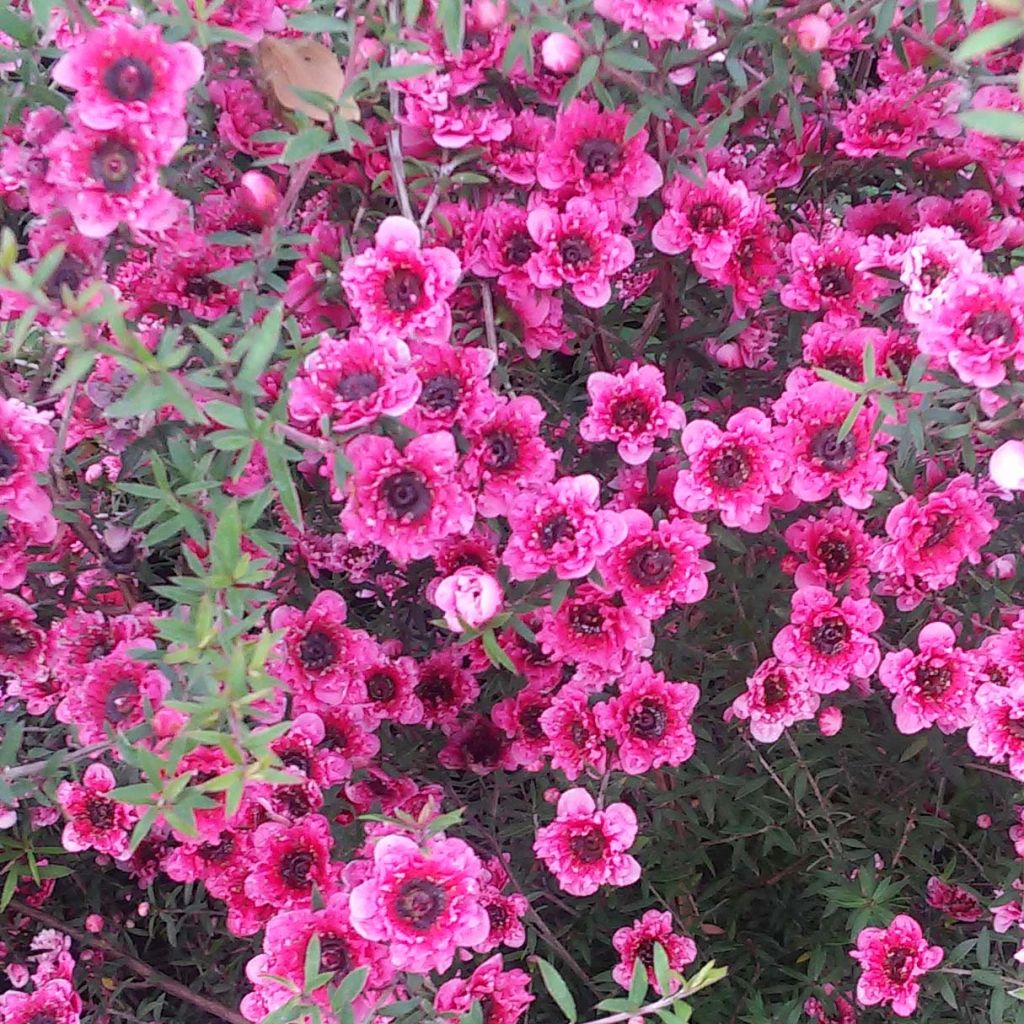

Leptospermum scoparium Wiri Kerry - Tea-tree
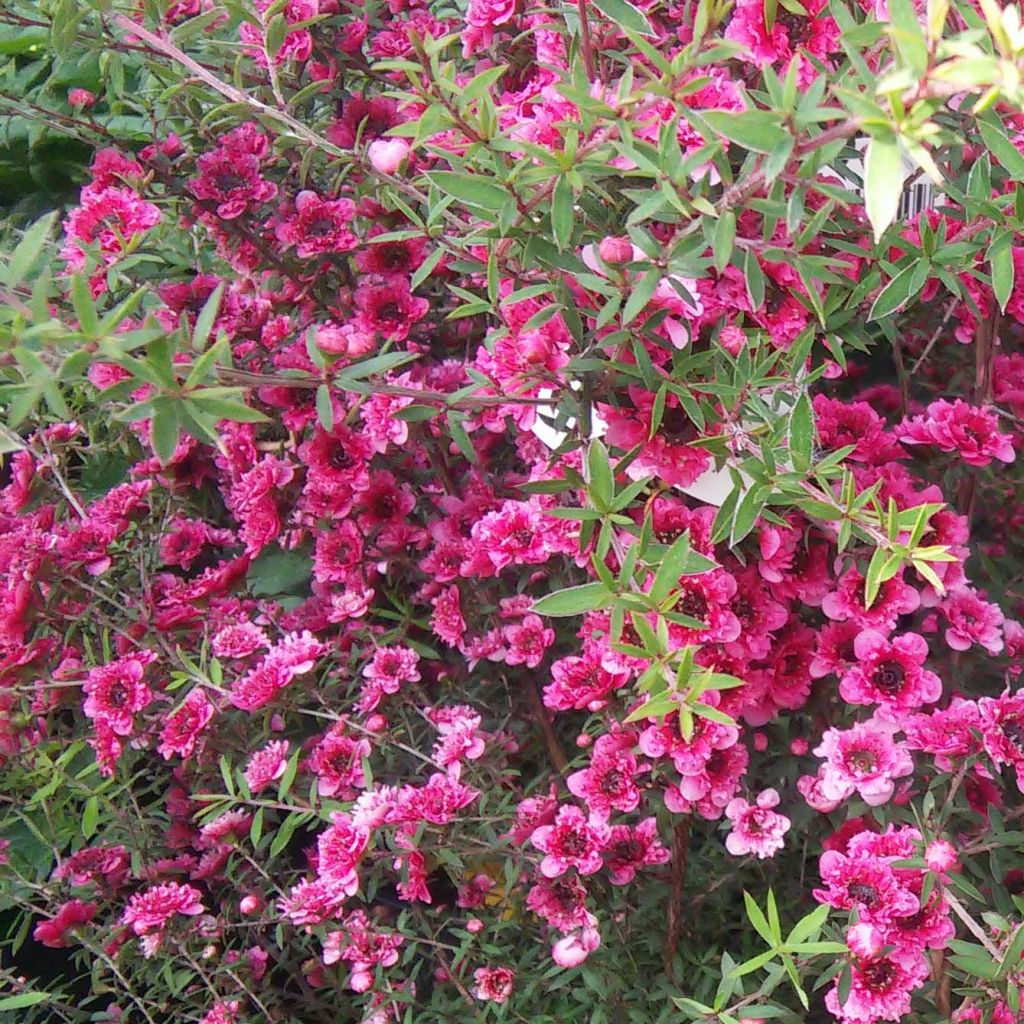

Leptospermum scoparium Wiri Kerry - Tea-tree
Leptospermum scoparium Wiri Kerry - Tea-tree
Leptospermum scoparium Wiri Kerry
Manuka, New Zealand Tea Tree, Tea Tree
Second attempt with this plant... the first one didn't make it through (strangely) the summer. I received a beautiful young plant, well-balanced.
SHINRA TENSEI, 04/10/2025
Special offer!
Receive a €20 voucher for any order over €90 (excluding delivery costs, credit notes, and plastic-free options)!
1- Add your favorite plants to your cart.
2- Once you have reached €90, confirm your order (you can even choose the delivery date!).
3- As soon as your order is shipped, you will receive an email containing your voucher code, valid for 3 months (90 days).
Your voucher is unique and can only be used once, for any order with a minimum value of €20, excluding delivery costs.
Can be combined with other current offers, non-divisible and non-refundable.
Home or relay delivery (depending on size and destination)
Schedule delivery date,
and select date in basket
This plant carries a 24 months recovery warranty
More information
We guarantee the quality of our plants for a full growing cycle, and will replace at our expense any plant that fails to recover under normal climatic and planting conditions.

Does this plant fit my garden?
Set up your Plantfit profile →
Description
Leptospermum scoparium Wiri Kerry is a recent variety of New Zealand tea tree, truly unique due to its double flowering of a very intense pink leaning towards red, carried on somewhat twisted reddish branches. Its flowering period is long and abundant from April to June, covering almost all of the branches filled with their fine bronze-tinted foliage. Its small size and dense spherical habit make this charming evergreen bush a beautiful piece for a romantic, cottage garden-inspired bed, even in poor and dry soil. Leptospermum are somewhat frost-sensitive and they prefer light, neutral to acidic soils. In open ground they are reserved for mild climates. But they accept pot cultivation very well, allowing gardeners in colder climates to also enjoy their generous flowering throughout the season.
Originally from the extreme southeast of Australia and New Zealand, Leptospermum scoparium, also known in English as tea tree, is a cousin of Mediterranean myrtles, clove trees and Eucalyptus. It belongs to the same family, the Myrtaceae, and shares with these plants a love of heat but also foliage rich in essential oil. It grows naturally in regions with a mild coastal climate but also in dry forests, most often on mineral-poor, leached, rather acidic soil, and forms a large bush 3 m (10 ft) high and wide.
The cultivar 'Wiri Kerry' belonging to the 'Nanum' group and distinguishes itself by its much more compact habit, purple-tinted stems and almost red flowers. This bush with its rounded habit, 90cm (35 in) in all directions, has fairly rapid growth. It has slightly aromatic leaves, alternate, single, pointed, quite small (max. 1 cm long), dark green in colour, with bronze and purple tinges. The flowers, double, slightly scented, honey producing and rich in nectar, appear from April-May to June, depending on the climate. They are composed of numerous petals surrounding a dark heart and do not exceed 1.5 cm (0.6 in) in diameter. They are followed by small capsules releasing fine elongated seeds. This bush can be lightly pruned after flowering, from May to July.
The 'Wiri Kerry' tea tree tolerates temperatures down to -10°C (14 °F) but the aerial parts can be damaged from -6°C (21.2 °F). It needs a sheltered spot, in full but not too hot sun. It tolerates sea spray well, making it a very beautiful bush for seaside gardens. While it prefers neutral to acidic soils it also tolerates slightly alkaline ones according to some experts, provided they are light, loamy and well-drained.
Leptospermum Wiry Kerry can be planted in a bed or in a group, in combination with ericaceous plants such as bushy heathers, Grevillea, Camellias, azalea, rhododendron, Japanese maple. It can also be used in the creation of a low evergreen hedge (no more than 1 m (3 ft) tall) in the company of Tarente Myrtle, cistuses (Cistus purpureus, Cistus (x) argenteus), compact ceanothus, Myrsine africana, Callistemons and other white or red Leptospermum. In regions with cold winters it should be grown in a pot and kept frost-free throughout the winter.
Leptospermum means "thin seed" and takes its common English name of tea tree from Captain Cook and his crew, who used its leaves to prevent scurvy.
Leptospermum scoparium Wiri Kerry - Tea-tree in pictures
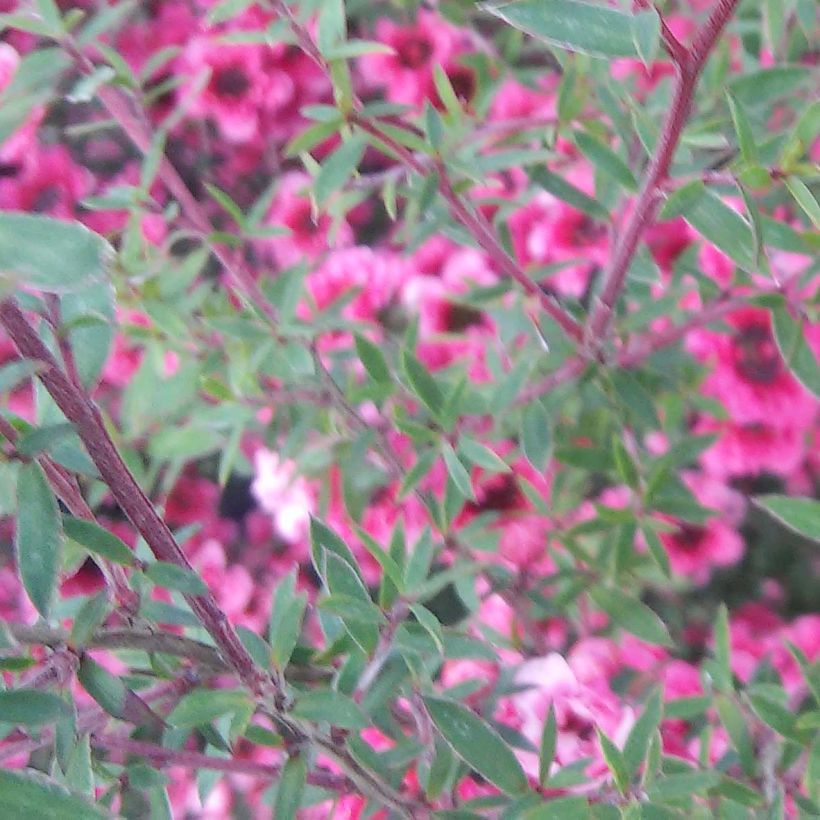

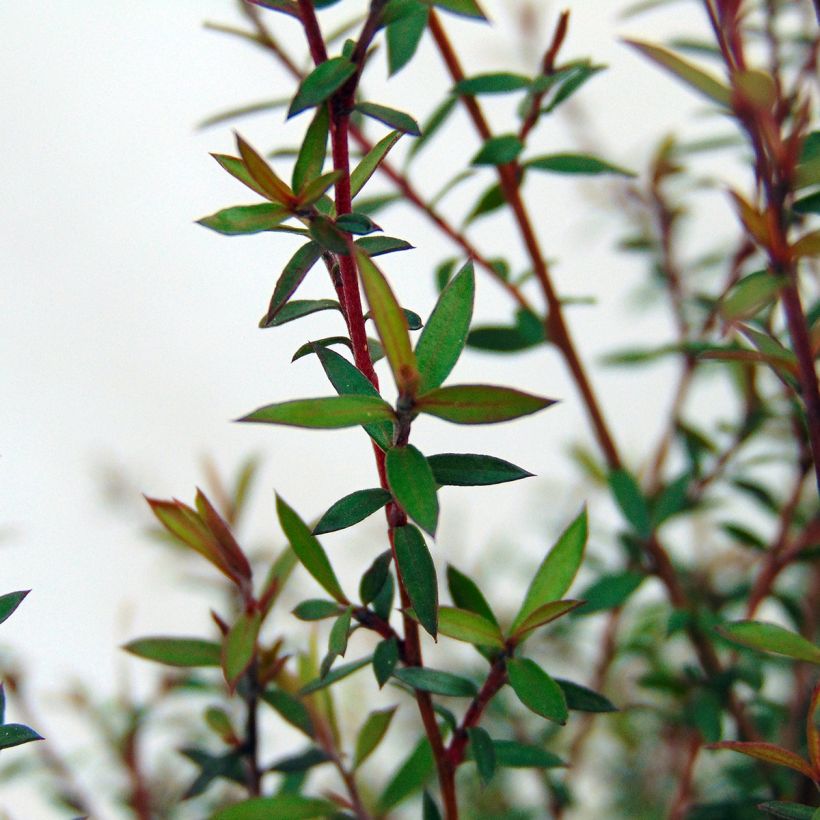

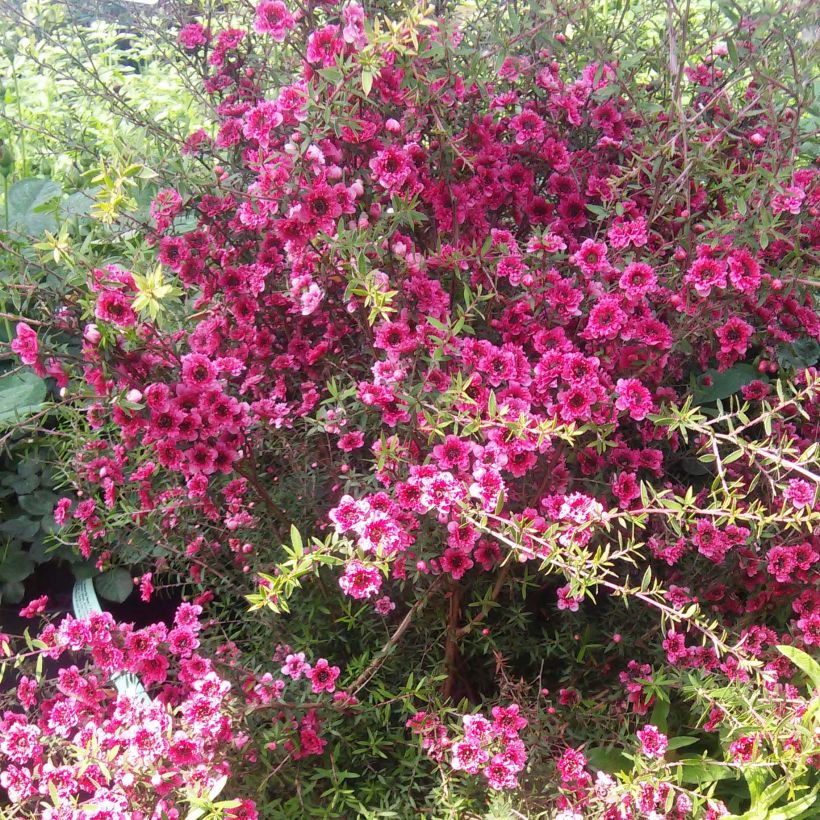

Plant habit
Flowering
Foliage
Botanical data
Leptospermum
scoparium
Wiri Kerry
Myrtaceae
Manuka, New Zealand Tea Tree, Tea Tree
Cultivar or hybrid
Other Leptospermum
View all →Planting and care
Leptospermum Wiri Kerry, hardy down to -8/-10°C, will require protection from cold North and East winds during harsh winters. It prefers draining to dry, light, loamy or sandy soils, with a neutral or acidic tendency. Choose a partially shaded site in a hot climate, or a sunny one in a cooler climate. If necessary prune lightly after flowering (do not remove more than 1/3 of the length of the branches) to maintain a compact habit. Only branches aged 1 to 2 years can be pruned because foliage on the old wood does not re-sprout, as with lavenders and rosemary. It will appreciate an input of extra nutrients in spring (compost or manure), even if not essential since Manuka is adapted to rather poor soils. In pots, let the surface of the root ball dry between waterings and reduce watering in autumn as soon as the temperatures drop. Preferably use non or only slightly calcereous water.
This plant has few known enemies and diseases. It can be propagated by seed (for the species, after cold stratification), or by cuttings (for the cultivars; take softwood cuttings of 10cm (4 in), with a heel, in August, or from woody branches in October) and place in a sandy and moist substrate.
Planting period
Intended location
Care
Planting & care advice
-
, onOrder confirmed
Reply from on Promesse de fleurs
Similar products
Haven't found what you were looking for?
Hardiness is the lowest winter temperature a plant can endure without suffering serious damage or even dying. However, hardiness is affected by location (a sheltered area, such as a patio), protection (winter cover) and soil type (hardiness is improved by well-drained soil).

Photo Sharing Terms & Conditions
In order to encourage gardeners to interact and share their experiences, Promesse de fleurs offers various media enabling content to be uploaded onto its Site - in particular via the ‘Photo sharing’ module.
The User agrees to refrain from:
- Posting any content that is illegal, prejudicial, insulting, racist, inciteful to hatred, revisionist, contrary to public decency, that infringes on privacy or on the privacy rights of third parties, in particular the publicity rights of persons and goods, intellectual property rights, or the right to privacy.
- Submitting content on behalf of a third party;
- Impersonate the identity of a third party and/or publish any personal information about a third party;
In general, the User undertakes to refrain from any unethical behaviour.
All Content (in particular text, comments, files, images, photos, videos, creative works, etc.), which may be subject to property or intellectual property rights, image or other private rights, shall remain the property of the User, subject to the limited rights granted by the terms of the licence granted by Promesse de fleurs as stated below. Users are at liberty to publish or not to publish such Content on the Site, notably via the ‘Photo Sharing’ facility, and accept that this Content shall be made public and freely accessible, notably on the Internet.
Users further acknowledge, undertake to have ,and guarantee that they hold all necessary rights and permissions to publish such material on the Site, in particular with regard to the legislation in force pertaining to any privacy, property, intellectual property, image, or contractual rights, or rights of any other nature. By publishing such Content on the Site, Users acknowledge accepting full liability as publishers of the Content within the meaning of the law, and grant Promesse de fleurs, free of charge, an inclusive, worldwide licence for the said Content for the entire duration of its publication, including all reproduction, representation, up/downloading, displaying, performing, transmission, and storage rights.
Users also grant permission for their name to be linked to the Content and accept that this link may not always be made available.
By engaging in posting material, Users consent to their Content becoming automatically accessible on the Internet, in particular on other sites and/or blogs and/or web pages of the Promesse de fleurs site, including in particular social pages and the Promesse de fleurs catalogue.
Users may secure the removal of entrusted content free of charge by issuing a simple request via our contact form.
The flowering period indicated on our website applies to countries and regions located in USDA zone 8 (France, the United Kingdom, Ireland, the Netherlands, etc.)
It will vary according to where you live:
- In zones 9 to 10 (Italy, Spain, Greece, etc.), flowering will occur about 2 to 4 weeks earlier.
- In zones 6 to 7 (Germany, Poland, Slovenia, and lower mountainous regions), flowering will be delayed by 2 to 3 weeks.
- In zone 5 (Central Europe, Scandinavia), blooming will be delayed by 3 to 5 weeks.
In temperate climates, pruning of spring-flowering shrubs (forsythia, spireas, etc.) should be done just after flowering.
Pruning of summer-flowering shrubs (Indian Lilac, Perovskia, etc.) can be done in winter or spring.
In cold regions as well as with frost-sensitive plants, avoid pruning too early when severe frosts may still occur.
The planting period indicated on our website applies to countries and regions located in USDA zone 8 (France, United Kingdom, Ireland, Netherlands).
It will vary according to where you live:
- In Mediterranean zones (Marseille, Madrid, Milan, etc.), autumn and winter are the best planting periods.
- In continental zones (Strasbourg, Munich, Vienna, etc.), delay planting by 2 to 3 weeks in spring and bring it forward by 2 to 4 weeks in autumn.
- In mountainous regions (the Alps, Pyrenees, Carpathians, etc.), it is best to plant in late spring (May-June) or late summer (August-September).
The harvesting period indicated on our website applies to countries and regions in USDA zone 8 (France, England, Ireland, the Netherlands).
In colder areas (Scandinavia, Poland, Austria...) fruit and vegetable harvests are likely to be delayed by 3-4 weeks.
In warmer areas (Italy, Spain, Greece, etc.), harvesting will probably take place earlier, depending on weather conditions.
The sowing periods indicated on our website apply to countries and regions within USDA Zone 8 (France, UK, Ireland, Netherlands).
In colder areas (Scandinavia, Poland, Austria...), delay any outdoor sowing by 3-4 weeks, or sow under glass.
In warmer climes (Italy, Spain, Greece, etc.), bring outdoor sowing forward by a few weeks.






























